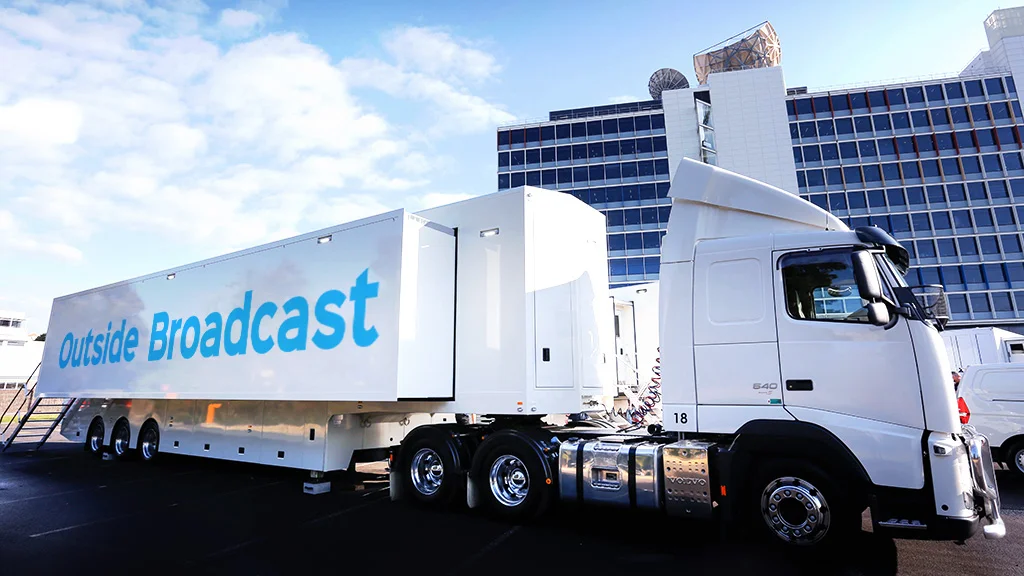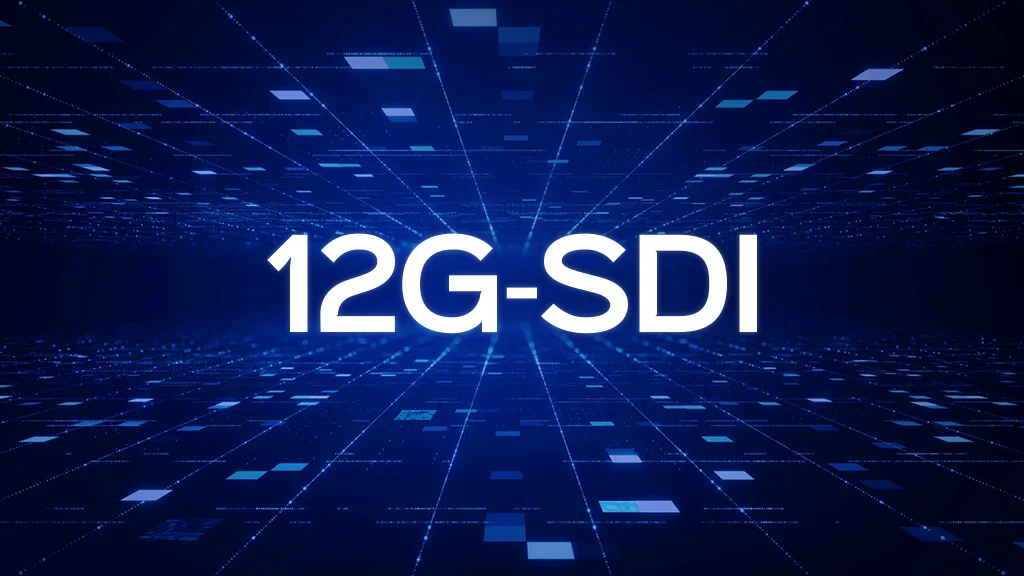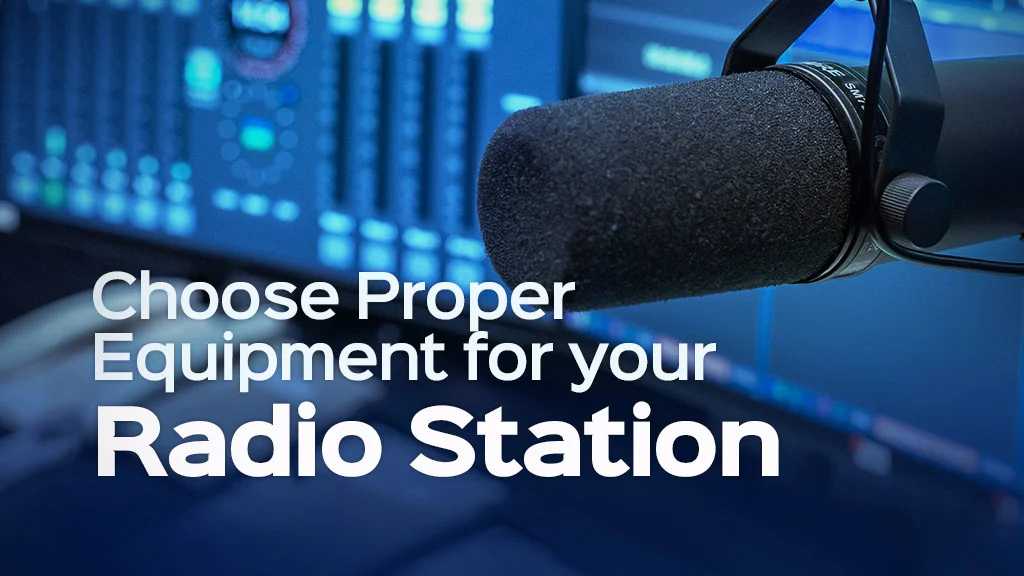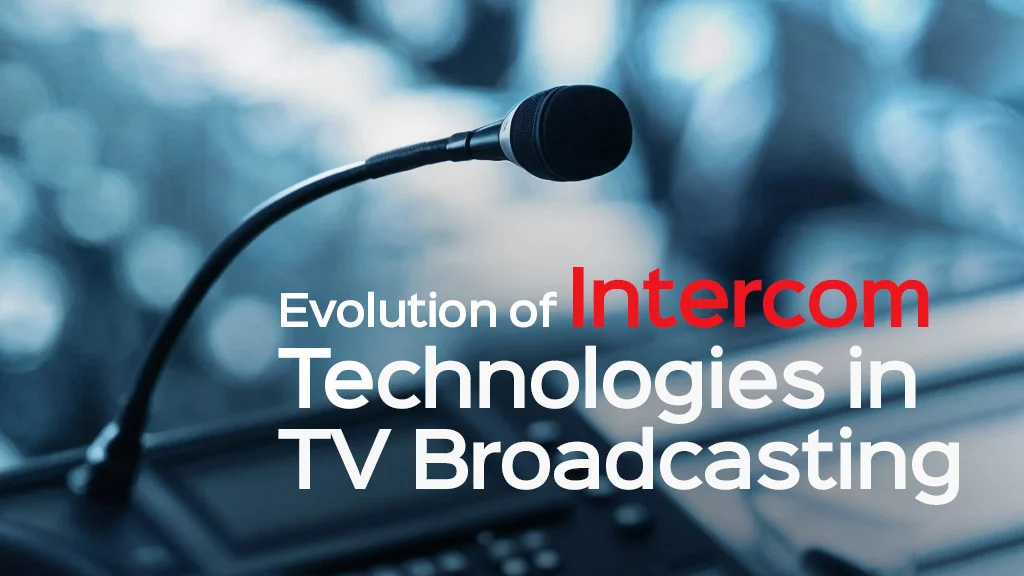
- Article
- Academy
Evolution of Intercom Technology in TV Broadcasting
Overview of communication needs in TV broadcasting
In TV broadcasting, studio intercom technology plays a crucial role in facilitating real-time communication among various personnel involved in the production process. This includes directors, producers, camera operators, sound engineers, and a multitude of other crew members. Effective communication is essential for broadcasters, as they require reliable and instantaneous methods to manage live broadcasts, coordinate multiple camera angles, and ensure seamless interaction among different departments, including production, direction, and technical support.
On the other hand, the complexity of modern broadcasting environments is often characterized by large teams working across multiple locations. This makes it imperative to have a robust studio communication system that can handle the demands of intricate workflows. Moreover, intercom systems must support various communication types, including peer-to-peer conversations and group communications, allowing for effective collaboration.
In summary, an intercom system is not just a communication tool; it is a vital component that enhances collaboration, boosts productivity, and plays a key role in delivering high-quality broadcasts.
History of Intercom Technology in TV Broadcasting
The History of studio intercom reflects the evolution of communication methods that have enhanced production efficiency and coordination. Here’s a timeline of key developments:
1. Early Days
Basic Communication: Early broadcast studios relied on rudimentary methods like loudspeakers and simple microphones for communication among personnel.
Walkie-Talkies: The introduction of portable radios provided some mobility, allowing crew members to communicate while moving around set locations.
2. Analog Intercom Systems (1960s-1980s)
Wired Intercoms: The 1960s saw the advent of wired studio communication, which offered clearer audio and more reliable communication, connecting multiple channels through a matrix switch.
Party-Line Systems: These systems allowed multiple users to share a single communication line, which was cost-effective and widely adopted in larger productions.
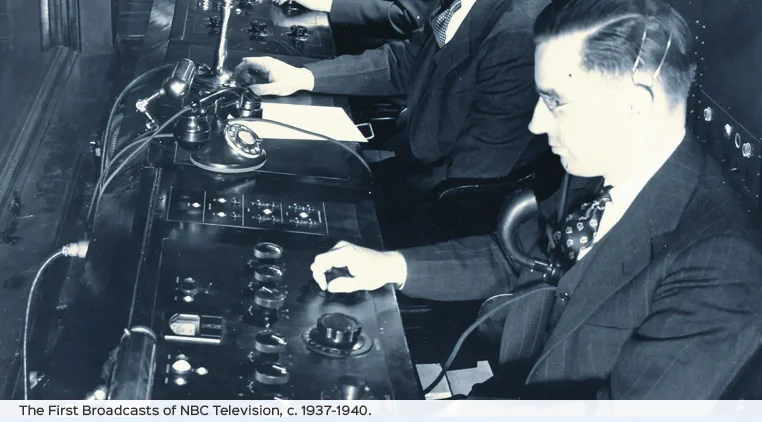
3. Digital Revolution (1990s)
Digital Intercoms: The shift to digital technology improved audio quality and reduced interference. Digital intercoms enabled more channels and advanced features like audio mixing and noise cancellation.
Integration with Broadcast Equipment: these systems began integrating with other broadcasting technologies, improving coordination between cameras, production control room , and on-site personnel.
4. Networked Intercom Solutions (2000s)
IP-Based Intercoms: The rise of Internet Protocol (IP) technology allowed broadcast communication systems to operate over existing network infrastructures, facilitating remote production and reducing cables.
Software Solutions: Companies began offering software-based intercom solutions that could be run on standard computers and mobile devices, enhancing flexibility.
5. Wireless and Mobile Technologies (2010s-Present)
Wireless Intercoms: Modern intercom systems increasingly utilize wireless technology, allowing for greater mobility and reducing clutter on set.
Cloud-Based Systems: The emergence of cloud-based intercom solutions has enabled remote collaboration, allowing teams to communicate seamlessly from different locations.
Enhanced User Interfaces: Touchscreen controls and mobile applications have become standard, making it easier for users to manage communications in real-time.
The evolution of intercom technology in TV broadcasting has transitioned from basic communication methods to sophisticated digital and IP-based systems. This progression has significantly enhanced the ability of production teams to coordinate effectively, adapt to new challenges.
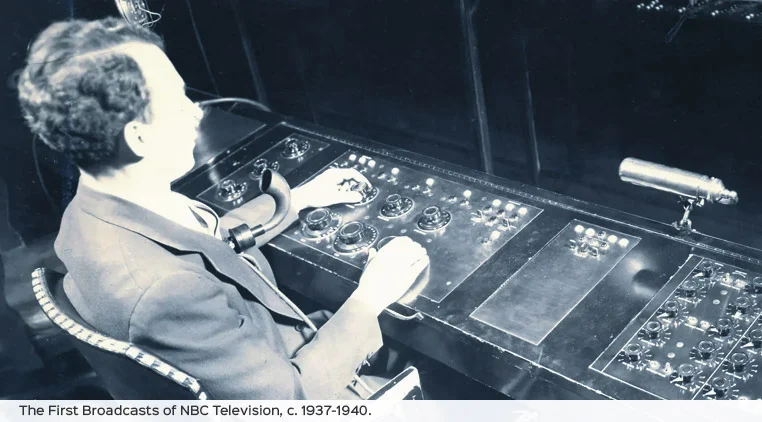
IP-Based Intercom Systems
The transition to IP-based intercom systems has transformed the landscape of broadcasting communication. With the advent of digital technology, broadcasters have begun to adopt IP intercom solutions that leverage existing network infrastructure. This shift has several advantages, including:
Scalability: IP systems can easily scale to accommodate growing communication needs without significant hardware changes.
Integration: They can integrate seamlessly with other IP-based broadcasting technologies, improving overall workflow and efficiency.
Cost-Effectiveness: By using existing network infrastructure, costs associated with cabling and hardware can be significantly reduced.
These systems also offer enhanced features such as high-definition audio, advanced routing capabilities, and support for mobile devices, allowing for greater flexibility in communication.
Read also :
Video Transport in Broadcast Industry
Challenges and Considerations of IP-Based Intercom Systems
Network Reliability: The performance of IP-based intercom relies heavily on network stability and bandwidth. Network failures can disrupt communication, so robust infrastructure and redundancy are crucial.
Security Concerns: As with any IP-based system, security is a concern. It’s essential to implement appropriate measures to protect against unauthorized access and cyber threats.
Training and Adaptation: Transitioning to IP-based systems may require training for staff, as the functionality and user interface can differ significantly from traditional systems.
Future of Intercom Technology in Broadcasting
The future of studio intercom technology in broadcasting is likely to see several advancements and developments that cater to the evolving needs of broadcasters and production teams. Some potential trends for the future could include:
Enhanced mobility: Future intercom technology may focus on providing more flexible and mobile solutions, enabling seamless communication for production teams working in dynamic or remote locations.
Artificial Intelligence (AI) integration: AI could be leveraged for advanced features such as automated language translation, voice recognition, and intelligent routing of communications based on context or urgency.
Cloud-based solutions: Cloud-based intercom systems are likely to become more prevalent, offering benefits such as scalability, remote accessibility, and simplified management across multiple sites or productions.
Interoperability with other broadcast technologies: Intercom systems will continue to evolve towards tighter integration with other broadcast equipment and software, facilitating streamlined workflows and enhanced collaboration between different production tools.
Improved audio processing capabilities: Advancements in audio processing technology will likely result in improved sound quality, noise cancellation features, spatial audio capabilities, and support for high-definition audio formats.
Enhanced security features: With increasing concerns about cyber security threats in broadcasting environments, future intercom systems may incorporate advanced encryption protocols and secure communication channels to safeguard sensitive communications.
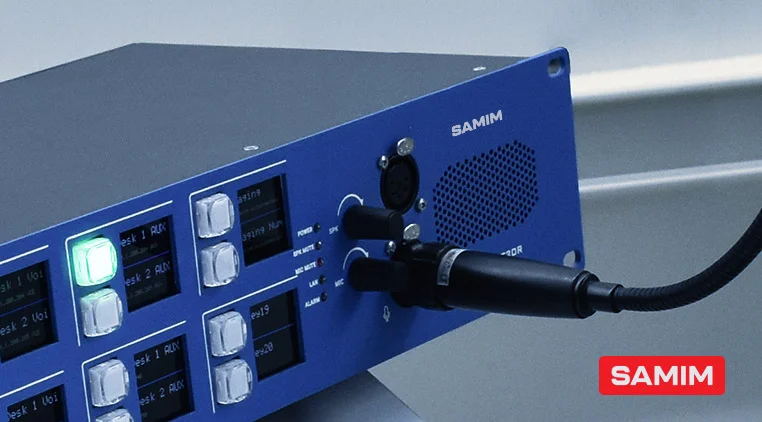
About Samim IP-based Intercom System
Samim intercom system is designed to streamline communication with its advanced IP-based architecture. This system operates on a peer-to-peer basis, eliminating the need for central servers or matrices, which significantly reduces initial deployment costs as well as ongoing operational and maintenance expenses. Additionally, this design enhances security by minimizing potential vulnerabilities associated with centralized systems.
Samim studio intercom system uses advanced audio processing technologies to deliver crystal-clear sound during live broadcasts. They support codecs like PCM, G.711, and G.722 with 16 / 48 kHz sampling rates, allowing versatile use in various audio environments. Users can create paging groups with up to 20 destinations, supporting peer-to-peer , peer-to-group, and group-to-group calling.
The system features echo cancellation, noise reduction, voice activity detection, and automatic gain control (AGC) for reliable audio quality. It also provides management tools for easy setup, backup and restore options, network diagnostics, and exportable log views for better monitoring.
Samim intercom systems offer modular design for easy customization and scalability, fitting any production size. They integrate seamlessly with SIP-based networks and existing broadcasting infrastructure, ensuring smooth interoperability. The user-friendly interface allows quick access to communication channels, while robust protocols and redundancy features ensure reliable performance in demanding environments.
